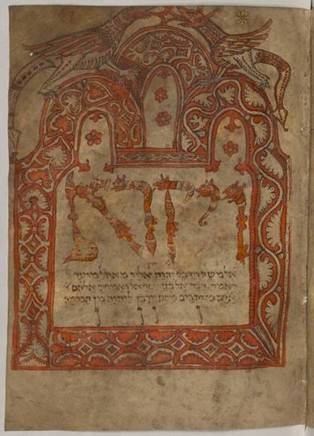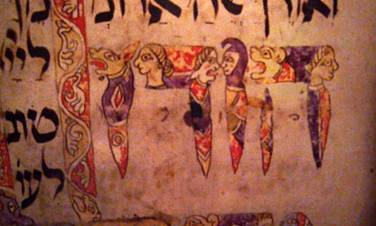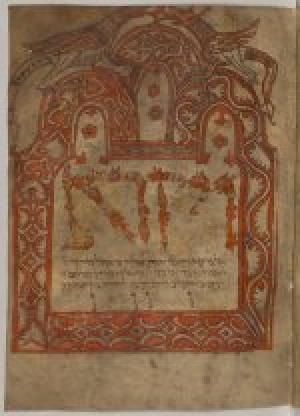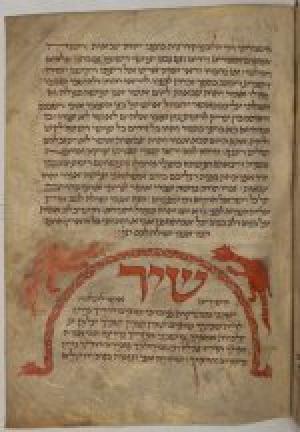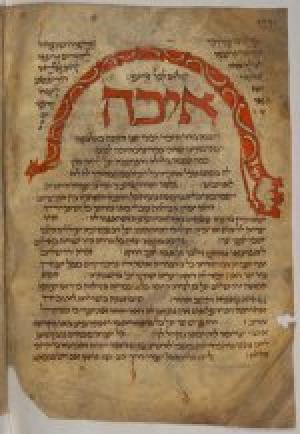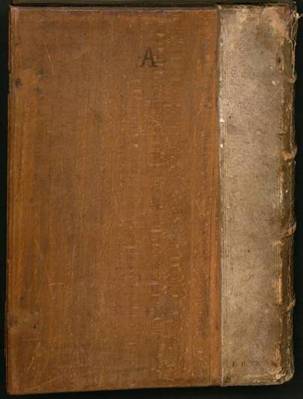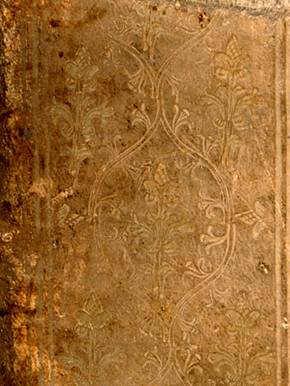Obj. ID: 4093
Hebrew Illuminated Manuscripts Red Dragon Pentateuch, Germany, 13th c.

The mutilated Liturgical Pentateuch contains the Pentateuch with Haftarot, Five Scrolls and most of Job, which was recited on Ninth Ab. Some quires at the beginning and end are lost: the book of Genesis and half of Exodus, and the final chapters of Job (up to 36:2, out of 42 chapters) and probably the "Passages of Doom" (Jeremiah 2:29 - 8:12, 9:24 - 10:16) which usually appear after Job in other Liturgical Pentateuchs (cf.Vienna, ÖNB Cod. Hebr. 6, 13 and 14). The choice and order of the Haftarot in our manuscript are according to the Ashkenazi rite, although their position immediately after the Pentateuch is uncommon. In other Ashkenazi manuscripts, like those from Vienna mentioned above, the Haftarot are placed between the Five Scrolls and Job. The order of the Five Scrolls also differs in various manuscripts (cf. Ginsburg 1966, I:3-4), though it usually begins with the Song of Songs.
Most of the decoration of the manuscript is at the openings of the various books of the Pentateuch and the Five Scrolls with frames and arches enclosing the text, having dragons attached to them or forming the letters of the initial words.
The decoration was undoubtedly executed by the scribe Baruch. The proof is an uncoloured scribal line-filler on fol. 118v shaped as a small dragon with protruding tongue, which is similar in style to the dragons decorating the openings of different books. The decorated ink drawings by the scribe Baruch were executed while copying the text and their shape sometimes determined the text lay-out (e.g. fol. 37v). The decorative motifs or the ground were coloured red after the text was copied. The drawing on fol. 157 remained uncoloured.
Decoration similar to that in our Pentateuch is found in one group of Ashkenazi manuscripts from the second half of the 13th century. Semi-circular arches emerging from dragons which enclose initial words (fig. 1) appear for example in the Stuttgart Mahzor (fig. 2; Sed-Rajna 1989:68). The origin of this group, albeit not yet proved, seems to be theRhineland(Sed-Rajna 1994:205). On the other hand, it should be mentioned that other compositions in our manuscript, as the dragons surmounting the arch (fig. 3), recall those placed in the spandrels of a manuscript fromFranconia(fig. 4). The arches and frames are commonly decorated with acanthus scrolls, or chains of heart-shaped leaves (figs. 3-4).
Another interesting feature in our manuscript is the dragons and dragon's heads shaping the letters of some initial words, especially their top (figs. 3 and 5). Such zoomorphic letters rarely appear in Ashkenazi manuscripts (fig. 6; cf. Sed-Rajna 1994:205-208), though they are common in Sephardi ones (cf. figs. 7-8).

Fig. 1: Red Dragon Pentateuch Munich, BSB Cod.hebr. 14, fol. 151v |
Fig. 2:Stuttgart Mahzor Rhineland, second half of the 13th century Stuttgart, Landesbibliothek Cod. Or. 20 42, fol. 46 (Sed-Rajna 1989:68) |
|
|
Fig. 3: Red Dragon Pentateuch Munich, BSB Cod.hebr. 14, fol. 17 |
Fig. 4: Siddur Franconia, first quarter of the 14th century Oxford, Bodl. Lib.Mich.571, fol. 2 (Jerusalem, CJA Documentation) |
|
 |
 |
|
|
Fig. 5: Red Dragon Pentateuch Munich, BSB Cod.hebr. 14, fol. 37v |
Fig. 6: Mahzor Rhineland (?), c.1264 Paris, BnF hébreu 644, fol. 67 (Sed-Rajna 1994:207) |
|
 |
|
|
Fig. 7: Red Dragon Pentateuch Munich, BSB Cod.hebr. 14, fol. 17, detail |
Fig. 8:Hamilton Siddur Spain, 1300 Berlin, Staatsbibliothek Ham. 288, detail (Narkiss 1969, pl. 7) |
The codicological features of the codex, e.g. similar treatment for hair and flesh sides of the parchment, pricking in the outer margins only and ruling by stylus, point to the transitional period for those techniques during the second half of the 13th century (Beit-Arié 1976:22-25, 70-71, 74).
Two flyleaves, at the beginning and the end of the manuscript, have woodcuts which originally appeared in the Schatzbehalter der wahren Reichtümer des Heils (Treasure Chest of the True Riches of Salvation) written by the Franciscan preacher Stephan Fridolin (1430-1498) and published by Anton Korberger in Nuremberg in 1491 (Stadler 1913:2-28). After Fridolin's work was printed, Koberger, who possibly owned the woodcut blocks, used them for printing single sheets to sell individually, adding to them frames of three types, decorated with different motifs. Schedel, who had close business and private relations with Koberger, could easily have acquired some of these single prints directly from Koberger, and have inserted them into the manuscript while executing the new binding. By choosing specific images for a Hebrew manuscript, Schedel must have considered the typology of events of the Old and New Testaments (see Illuminated Documents: front cover, third flyleaf and back cover, first flyleaf).
sub-set tree:
Text space: (273-275) x (195-197) mm.
|
Fig. 1: Red Dragon Pentateuch Munich, BSB Cod.hebr. 14, front cover |
Fig. 2: Red Dragon Pentateuch Munich, BSB Cod.hebr. 14, detail of the chain of floral ornament on the back cover |
15th century wooden boards (366 x 268 mm).The spine and part of the wooden boards are covered with a strip of white pigskin (width: 70 mm) decorated with a blind-tooled chain of floral ornament (fig. 2). The spine has four double cords and a tail band (the head band is missing). Holes and remains of nails situated along the upper and lower edges of the front cover denote the place of two lost clasps (fig. 1). They correspond to the carved squares on the back cover where the straps were attached.
The binding was most probably done in the Augustinian Eremiten monastery of St. Vitus inNuremberg(Munich, EBDB p001297; Hernad 1990:66; Kyriss 1951/58, No. 19).
This binding is similar to that of other Hebrew manuscripts from Schedel's collection (see BSB Cod.hebr. 16, 21, 69, 88, 90, 298).
The openings of the different books of the Pentateuch, the frames of scrolls and arches enclosing the text were executed by the scribe. Mostly coloured red, the decoration consists of zoomorphic and foliate motifs.
- Decorated frames and large zoomorphic initial words open most books: Leviticus (fol. 17), Numbers (fol. 37v), Deuteronomy (fol. 66v), Song of Songs (fol. 142), Esther (beginning and end, fols. 151v and 157 respectively), and Lamentations (fol. 157v).
- Initial words coloured in red or blue or decorated with acanthus scrolls open the parashot, haftarot and different chapters of the Five Scrolls (e.g. fols. 93, 95, 98, 118v, 161v).
- Shaped text: at the end of Lamentations (fols. 160-162v, see fol. 161v) the text is enclosed in circles. On fol. 162v is a deer within a circle by a later hand.
- Catchwords, ascenders and descenders of the letters in the top and bottom lines are decorated with red lines and wrigglework (e.g. fol. 118v).
- Two printed flyleaves of the 15th century depict the Sacrifice of the Scapegoat and Joseph
presenting Jacob and his brothers to Pharaoh (front cover, third flyleaf and back cover, first
flyleaf respectively).
Note: A green folio number denotes it is described under "Illuminated Documents".
In the margins: some by the scribe who proofread the text (e.g. fols. 54v-55); others are by later Ashkenazi hands (e.g. fols. 40v, 48, 61v, 104).
Owners' inscriptions:
Fol. 50v, outer margin: Abraham bar Mordechai.
Fol. 92v, lower part: אהרן בר שלמה מש' אברהם (Aharon bar Shlomo, of the Abraham family); ר' בן שמעון (R. ben Shimon). Other inscriptions are illegible.
Fol. 158v, upper and lower margins: R. Aharon bar Shlomo; R. Levi bar Abraham Hasofer.
Fol. 161v, within the right connecting curve: אהרן ב'ר'ב'י' שלומה אשר ב'ר' שלום (Aharon bar Rabbi Shlomo Asher bar Rabbi Shalom).
Librarians' inscriptions:
On a piece of paper pasted on the inner front cover (originally written on the pastedown, which was cut off during restoration): an inscription by W. Prommer, the librarian of the Bavarian Court and State Library in red ink: ארבע ספרים מהחומש גם ההפתורות(!) לכל פרשה ופרשה/ מכל השנה גם חמש מגילות שהם/ שיר השירים/ רות/ איכה/ קוהלת/ אסתר, (Four of the five books of the Pentateuch with the haftarot for each parashah for the entire year, also five scrolls which are Song of Songs, Ruth, Lamentations, Ecclesiastes, Esther).
Obviously at the time when this inscription was written Genesis was already missing. The order in which the scrolls are mentioned differs from their actual order in the manuscript.
Front cover, first flyleaf, verso, upper part: an inscription by Librarian 1a (1552-1571) in brown ink: ארבע(!) ספרים מתורת משה ורות ומגילת אסתר/ ואיכה והפטרות (Four books of Moses and Ruth and Esther Scroll and Lamentations and Haftarot).
Under it on the left the contents in Hebrew written in Latin characters by Librarian 2: Arba sepharim mitoras moschae/ ve Ruth Vmegilas aesther ve/ echa vehautharos. Id est.
On the right in Latin by Librarian 2: Quattuor libri Mosis: Ruth,/ Esther, Threni Iheremiae et/ Liber Lectionum. The same is written in Latin and in Hebrew in Latin characters. This librarian likewise did not follow the actual order of the contents of the manuscript.
Two of Fugger's librarians, Thomas von Löven and Sixtus Birk, who registered Hebrew books, translated the names into Latin and inscribed their contents on pastedowns and flyleaves (Zelinsky Hanson 2009:201).
Contents of the manuscript in Latin by S. Quicchelberg on a separate piece of paper (originally written on one of the flyleaves which was cut off during restoration).
Signatures:
Front cover, upper part, in black ink: •A• (signature of Schedel's library).
Back cover, upper part of pigskin strip, in black ink: St. 8. n. 75 (signature of Fugger's library).
Front cover, lower part of pigskin strip, in black ink: J. n. 57 (Duke's library, Prommer's signature).
Front cover, paper pasted on the inside (originally written on the pastedown which was cut off during the restoration), in red ink: J. 47 (Prommer's revision of the Duke's library in 1582-3).
Front cover, paper pasted on the inside (originally written on the pastedown which was cut off during restoration), in black ink: MS. Hebr. 10.
Spine, in black and brown ink on three stickers: 10, 57 and Cod. hebr. 14 (current signature of BSB).
Exlibris and library stamps:
Front cover, inside: an exlibris of the Bavarian Court and State Library (230 x 155 mm) with arms of Elector Maximilian I from 1638 (Dressler 1972:B3ab). It is stuck over the Duke's earlier exlibris
(175 x 135 mm) from 1618, before he became Elector in 1623 (Dressler 1972:A3a-f).
Stamps: None.
In 1552 Hartmann Schedel's collection of Hebrew manuscripts, together with other manuscripts and printed books from his library, was sold by his grandson Melchior to Johann Jacob Fugger of Augsburg. Later, in 1571, Fugger's library was acquired by Duke Albrecht V of Bavaria and incorporated into the Duke's Hofbibliothek in Munich (Hartig 1917:261; Stauber 1908:146).
Restoration: 21.12.1951.



